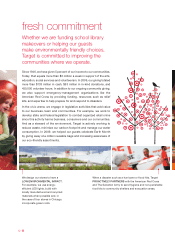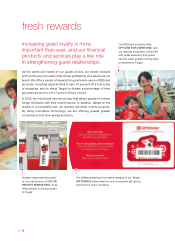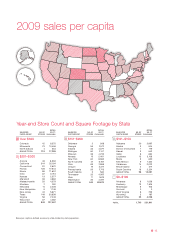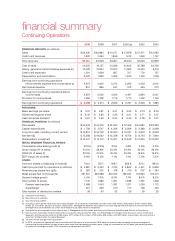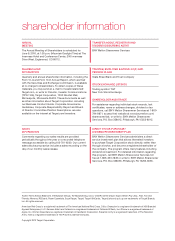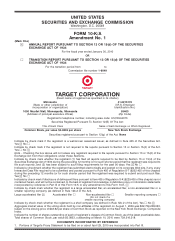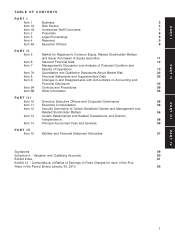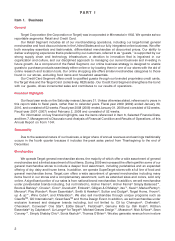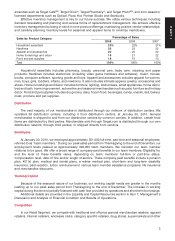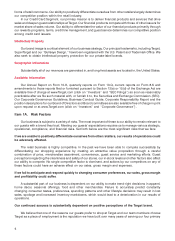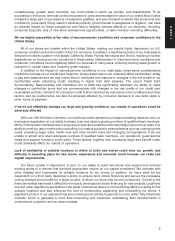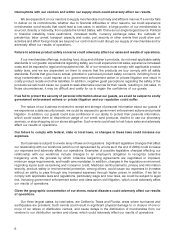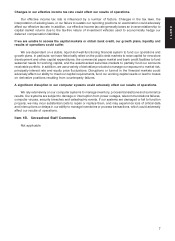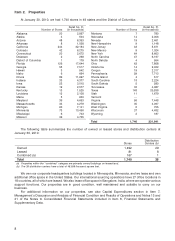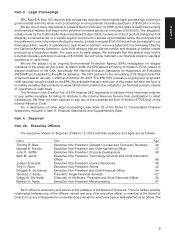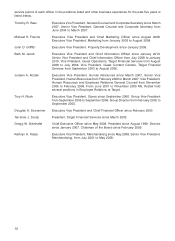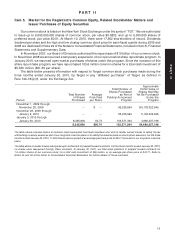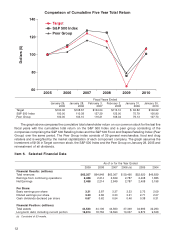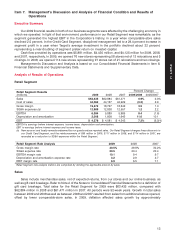Target 2009 Annual Report Download - page 24
Download and view the complete annual report
Please find page 24 of the 2009 Target annual report below. You can navigate through the pages in the report by either clicking on the pages listed below, or by using the keyword search tool below to find specific information within the annual report.
amenities such as Target Caf´
eSM, Target Clinicᓼ, Target Pharmacyᓼ, and Target PhotoSM, and from leased or
licensed departments such as Optical, Pizza Hut, Portrait Studio and Starbucks.
Effective inventory management is key to our future success. We utilize various techniques including
demand forecasting and planning and various forms of replenishment management. We achieve effective
inventory management by being in-stock in core product offerings, maintaining positive vendor relationships,
and carefully planning inventory levels for seasonal and apparel items to minimize markdowns.
Percentage of Sales
Sales by Product Category
2009 2008 2007
Household essentials 23% 22% 21%
Hardlines 22 22 22
Apparel and accessories 20 20 22
Home furnishings and d´
ecor 19 21 22
Food and pet supplies 16 15 13
Total 100% 100% 100%
Household essentials includes pharmacy, beauty, personal care, baby care, cleaning and paper
products. Hardlines includes electronics (including video game hardware and software), music, movies,
books, computer software, sporting goods and toys. Apparel and accessories includes apparel for women,
men, boys, girls, toddlers, infants, and newborns. It also includes intimate apparel, jewelry, accessories and
shoes. Home furnishings and d´
ecor includes furniture, lighting, kitchenware, small appliances, home d´
ecor,
bed and bath, home improvement, automotive and seasonal merchandise such as patio furniture and holiday
d´
ecor. Food and pet supplies includes dry grocery, dairy, frozen food, beverages, candy, snacks, deli, bakery,
meat, produce and pet supplies.
Distribution
The vast majority of our merchandise is distributed through our network of distribution centers. We
operated 38 distribution centers, including 4 food distribution centers, at January 30, 2010. General
merchandise is shipped to and from our distribution centers by common carriers. In addition, certain food
items are distributed by third parties. Merchandise sold through Target.com is distributed through our own
distribution network, through third parties, or shipped directly from vendors.
Employees
At January 30, 2010, we employed approximately 351,000 full-time, part-time and seasonal employees,
referred to as ‘‘team members.’’ During our peak sales period from Thanksgiving to the end of December, our
employment levels peaked at approximately 390,000 team members. We consider our team member
relations to be good. We offer a broad range of company-paid benefits to our team members. Eligibility for,
and the level of, these benefits varies, depending on team members’ full-time or part-time status,
compensation level, date of hire and/or length of service. These company-paid benefits include a pension
plan, 401(k) plan, medical and dental plans, a retiree medical plan, short-term and long-term disability
insurance, paid vacation, tuition reimbursement, various team member assistance programs, life insurance
and merchandise discounts.
Working Capital
Because of the seasonal nature of our business, our working capital needs are greater in the months
leading up to our peak sales period from Thanksgiving to the end of December. The increase in working
capital during this time is typically financed with cash flow provided by operations and short-term borrowings.
Additional details are provided in the Liquidity and Capital Resources section in Item 7, Management’s
Discussion and Analysis of Financial Condition and Results of Operations.
Competition
In our Retail Segment, we compete with traditional and off-price general merchandise retailers, apparel
retailers, Internet retailers, wholesale clubs, category specific retailers, drug stores, supermarkets and other
3
PART I


